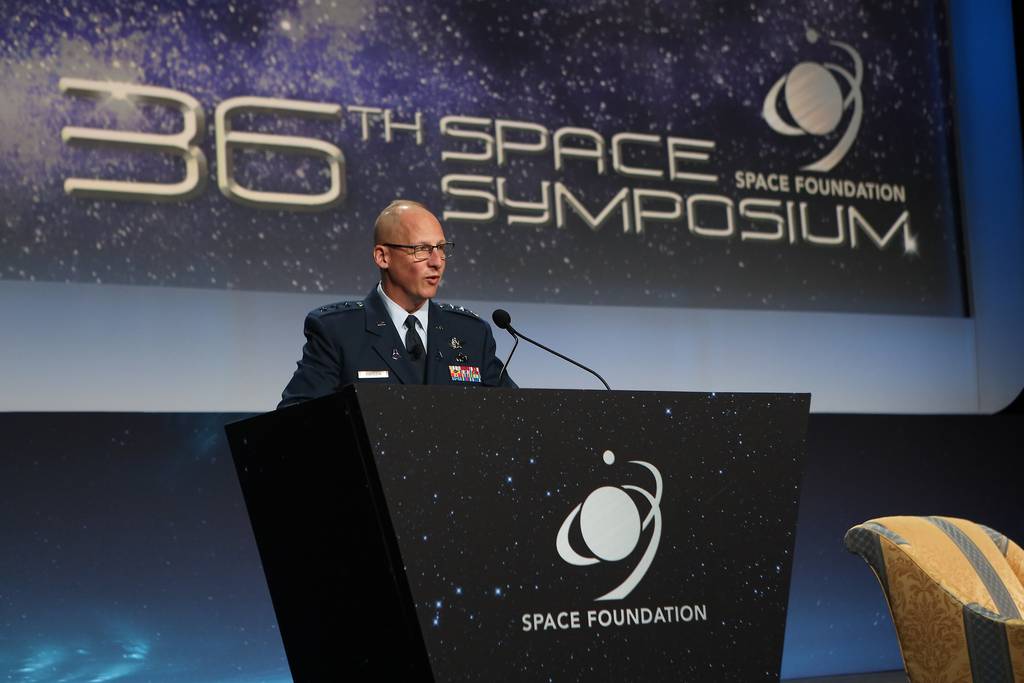WASHINGTON — The Space Force’s procurement organization has set 2026 as a target date for delivering “maximum operational capability” in the form of new, more resilient space systems.
That timeline, says Space Systems Command Executive Director Joy White, was set by SSC Commander Lt. Gen. Michael Guetlein and is informed by growing concerns among the service’s leadership about growing on-orbit threats.
Speaking during a Space Symposium 365 event this week, White didn’t elaborate on the threat assessments that support the 2026 need date, but said there’s an urgency among the service’s acquisition leadership to ensure its processes and culture are structured to support rapid development and fielding of new space capabilities.
While it’s not immediately clear how SSC leadership defines “maximum operational capability,” the command’s push for fielding more resilient constellations — and doing so quickly — aligns with messaging from Air Force and Space Force leadership.
Defining “a resilient space order of battle” tops Air Force Secretary Frank Kendall’s list of operational imperatives, which he outlined earlier this year. Chief of Space Operations Gen. John Raymond said during a Mitchell Institute event in January the service would “begin to pivot significantly” to a resilient architecture this year. And the Biden administration’s nominee to serve as the Air Force’s first-ever space acquisition executive, Frank Calvelli, brought the point home during his confirmation hearing Thursday.
“We are at a critical juncture for our space defense architecture, and there is a real sense of urgency to act,” Calvelli, a former National Reconnaissance Office official, told the Senate Armed Services Committee. “The nation needs to make its space architecture more resilient so that it can be counted on during times of crisis and conflict.”
For SSC, supporting the push for resiliency means organizational and cultural changes as well as finding new ways to engage with industry and streamline its processes, White said. On the organizational side, the command is poised to announce a realigned structure in the coming weeks aimed at reducing bureaucracy, increasing industry engagement and tightening its focus on key mission areas. As for shifting the culture to be “laser-focused on the threat,” White said SSC has mandated monthly threat briefings for all acquisition personnel and is offering content from those briefings to industry.
White also discussed a new initiative to leverage commercial innovation called “SSC Front Door,” which she said will give industry a more clear entry point to engage with the command. The front door team is made up of leaders across the space acquisitions, operations and science and technology community who are “empowered to make opportune investments in high-potential technologies.”
In the area of requirements generation, White said SSC works closely with the Space Force’s new Space Warfighting Analysis Center, which is developing force designs for key Space Force mission areas. As the SWAC completes its designs, the Program Integration Council – made up of representatives from each space acquisition organization – recommends requirements to support the proposed architecture, which go to the Space Acquisition Council for approval. The approved requirements are then fed to the relevant program offices at SSC or another acquisition organization.
“This new process enables end-to-end capability delivery, unity of effort in the space realm and encourages bold thinking to ensure resilient warfighting capabilities,” White said.
As SSC hones its processes and culture to support the Space Force’s resiliency push, the Air Force’s space acquisition and integration office is working to ensure its near-term budget requests reflect Kendall’s operational imperatives.
During a Feb. 10 Space Force IT Day hosted by the Armed Forces Communications and Electronics Association, Chief of Space Force Acquisition and Planning Col. Dan Visosky said the service is looking at whether it can make changes to the fiscal 2023 budget, though most of the focus is on affecting the fiscal 2024 budget cycle.
“The timelines are tight,” he said. “They’re being built to go quick right now to affect those [program objective memorandums], but I would look for them to be enduring. I think they’re going to be ongoing, year over year, and that we’re going to keep on getting after it through each [Program Objective Memorandum] cycle.”
Courtney Albon is C4ISRNET’s space and emerging technology reporter. She previously covered the U.S. Air Force and U.S. Space Force for Inside Defense.

:quality(70)/cloudfront-us-east-1.images.arcpublishing.com/mco/RNVCXOHLCZDLPO3ZD5VQA5XRMU.jfif)
:quality(70)/cloudfront-us-east-1.images.arcpublishing.com/mco/SENGHHRVP5CYDGQKOLNRB2BZJY.jpg)
:quality(70)/cloudfront-us-east-1.images.arcpublishing.com/mco/74V4HFJK4VFDHF4HF2UOQHRKM4.jpg)
:quality(70)/cloudfront-us-east-1.images.arcpublishing.com/mco/3MZIFSF6SNC6HKLUWAB7T3HCAQ.JPG)